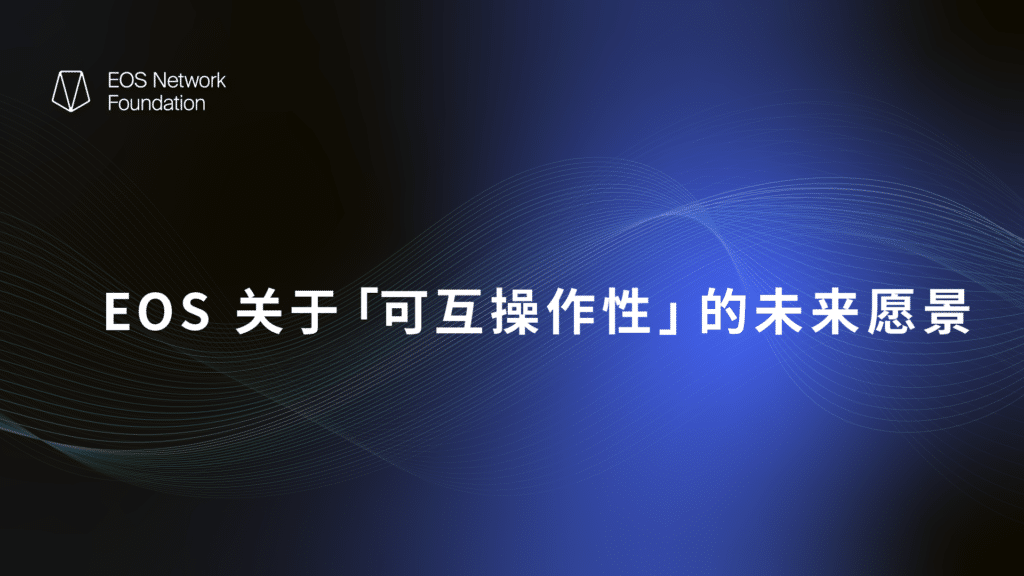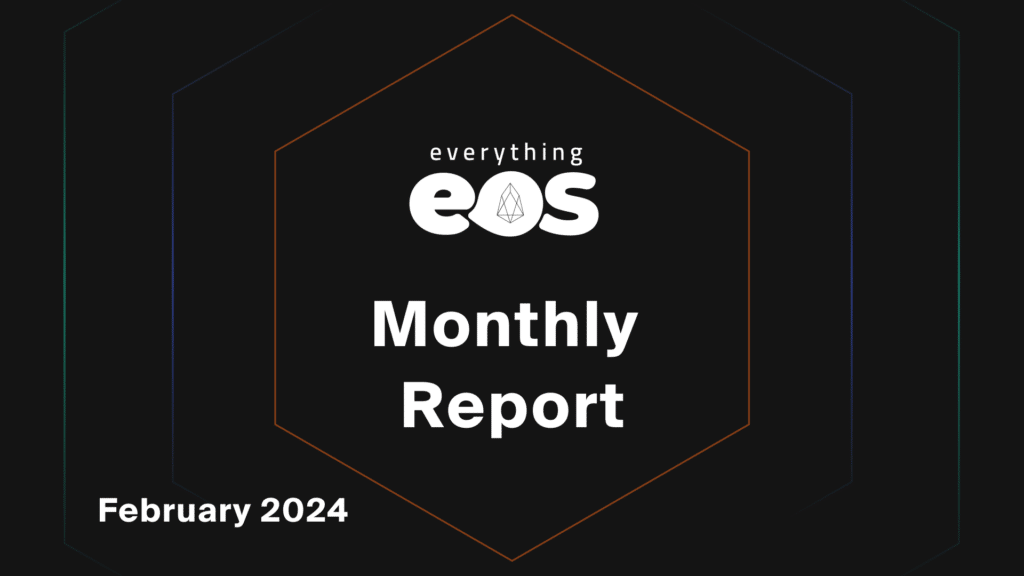The Trustless Bridge Frontend introduces a critical functionality to the EOS EVM ecosystem, empowering users to seamlessly transfer EOS tokens between the EOS Native environment and the EOS EVM environment using a simple user interface. This recent release focuses solely on enabling EOS token transfers within the EOS ecosystem with future releases planned to expand the library of tokens available for use. Read on for details.
New Features
Deposit EOS to an EVM Account
Users can deposit EOS from their EOS Accounts and Centralized Exchange Accounts to their EOS EVM Address. While the actions to perform a deposit take place either via a wallet or exchange that supports EOS, the Trustless Bridge Frontend can be used as an instructional guide for these functions.
Transfers are sent to the EOS EVM Contract Account with a memo to specify the destination EOS EVM Address.
- EOS EVM Contract Account: eosio.evm
- memo: destination EOS EVM Address
Note: The Trustless Bridge requires that the memo field be populated with the destination EOS EVM Address. Failure to specify a memo will cause the transaction to be rejected by the contract with no transfer having taken place.
Depositing from a Centralized Exchange Account
The ability to deposit EOS to an EOS EVM Address directly from a centralized exchange removes user onboarding friction by eliminating the need for a user to possess or create an EOS Account. This is helpful for users unfamiliar with the EOS Account creation process, resource management conventions, and the cost of EOS Account creation.
Depositing from an EOS Account
Users that already possess an EOS Account may deposit EOS to an EOS EVM Address by sending it to the EOS EVM Contract Account and populating the memo field with the intended destination EVM Address.
Withdraw EOS from EOS EVM Address
Users can withdraw EOS from their EOS EVM Address to their external EOS accounts by using the bridge with a connected EOS EVM Wallet. Once connected, the user may specify the balance of EOS they wish to send along with the intended destination EOS Account. The use of the memo field for this function varies by the nature of the destination EOS Account.
Withdrawing to an EOS Account
Withdrawing to an EOS Account only requires the destination EOS Account and a specified balance of tokens to send. The memo field can still be specified and will be included as part of the token transfer, but it is not required.
Withdrawing to a Centralized Exchange Account
Withdrawing to a Centralized Exchange Account requires both the destination EOS Account of the exchange and the appropriate memo field used as a unique identifier within their system of record. Exchanges that support EOS will supply users with both the EOS Account (sometimes referred to as “EOS Address”) and memo (sometimes referred to as “EOS memo”). In order to access these values, navigate to the “Receive EOS” option within your exchange of choice.
Note: Both an EOS Account and EOS memo are required to receive EOS. If you send tokens without an EOS memo they may not be credited to your account.
Note: The Trustless Bridge requires that an exchange recognizes inline actions generated within a transaction to successfully withdraw from an EOS EVM Address. Utilizing an exchange that does not support inline actions may lead to a temporary loss of tokens requiring manual intervention by the customer support team of the exchange
EOS EVM and EOS Native Transaction Hash Mapping
In some scenarios for troubleshooting transfer issues, it can be helpful to possess the transaction hash for the EOS EVM as well as EOS Native. With the latest release, the hash for both network transactions are exposed to the user for easy copying and pasting.

Note: Withdrawals to a Centralized Exchange Account for a centralized exchange that does not recognize inline actions has been the most prevalent source of demand for this feature from our users. When seeking support from your exchange, it is helpful to be equipped with both transaction hashes in-case they have not worked with EOS EVM in the past.
Centralized Exchange Support for Inline Transfers
A commonly reported experience for users of EOS EVM is that their exchange does not support inline transfers for withdraw functions, which has led to their temporary inaccessibility of tokens without manual intervention. It is a known issue that if a token transfer is not observed or recognized as an inline transfer by a centralized exchange, the tokens might become temporarily inaccessible. This is because the exchange’s systems may not immediately update the user’s account balance to reflect the deposit, which can lead to confusion and frustration. Inline transfers ensure that the transfer and the associated balance update happen seamlessly and simultaneously, avoiding any potential disruption in the user’s ability to access and trade their tokens.
Withdrawals to OKX Now Supported

Historically, the ENF has decided to block attempted transfers to known Centralized Exchanges that do not support inline transfers in order to help avoid user frustration and protect their tokens. Because OKX now supports inline transfers, we have unblocked sending to their address, making withdrawals directly to OKX accounts now possible.
Other Exchange Benefits
Simplified Bookkeeping: For exchanges, supporting inline transfers means they can maintain accurate and up-to-date account balances for users. This simplifies their internal bookkeeping processes and helps prevent discrepancies in user account balances.
Enhanced User Experience:
By supporting inline transfers, exchanges can provide a smoother and more seamless experience for their users. Users can execute token transfers without needing to perform separate transactions or engage with customer support.
With inline transfers, users can easily track the status of their transactions and token transfers within a single transaction ID. This makes it simpler to monitor and verify their activities on the blockchain.
Dive Into the Latest Release of the EOS EVM Trustless Bridge
The release of the EOS EVM Trustless Bridge Frontend aims to improve the user experience and reduce friction for user onboarding. If you’d like to begin utilizing this powerful feature, head to bridge.evm.eosnetwork.com. Be sure to follow the EOS Network Foundation on Twitter and join the EOS Community Discord to stay in the loop on future releases for this and other products.
EOS Network
The EOS Network is a 3rd generation blockchain platform powered by the EOS VM, a low-latency, highly performant, and extensible WebAssembly engine for deterministic execution of near feeless transactions; purpose-built for enabling optimal Web3 user and developer experiences. EOS is the flagship blockchain and financial center of the Antelope framework, serving as the driving force behind multi-chain collaboration and public goods funding for tools and infrastructure through the EOS Network Foundation (ENF).
EOS EVM
The EOS EVM is an emulation of the Ethereum network’s EVM, housed within an EOS smart contract. It offers feature parity to other EVMs in the space but with unmatched speed, performance and compatibility. EOS EVM connects the EOS ecosystem to the Ethereum ecosystem by allowing developers to deploy a wide array of Solidity-based digital assets and innovative dApps on EOS. Developers can use EOS EVM to take advantage of Ethereum’s battle-tested open source code, tooling, libraries and SDKs, while leveraging the superior performance of EOS.
EOS Network Foundation
The EOS Network Foundation (ENF) was forged through a vision for a prosperous and decentralized future. Through our key stakeholder engagement, community programs, ecosystem funding, and support of an open technology ecosystem, the ENF is transforming Web3. Founded in 2021, the ENF is the hub for EOS Network, a leading open source platform with a suite of stable frameworks, tools, and libraries for blockchain deployments. Together, we are bringing innovations that our community builds and are committed to a stronger future for all.
ENF Website | Twitter | Discord | LinkedIn | Telegram | YouTube



